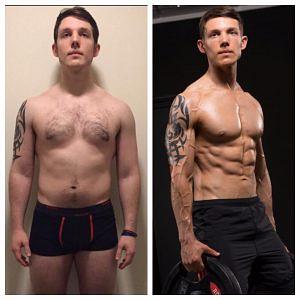1. ‘Dance With The One Who Brung Ya’
What built your muscle is what will keep your muscle. If you get rid of muscular overload in favour of ‘fat burning workouts’, your body no longer has any reason to hold onto the muscle it’s built.
2. Train Like You Want To Build Muscle
3. Focus On Strength
4. Increase Your Training Frequency
For fat loss, I think there can be merit to training a little more frequently for periods of time.
- You can spread volume out a little more during the week, allowing you to potentially maintain strength on key lifts higher.
- It allows you to keep food higher as you’ll be more active.
- You can focus more in each session – shorter sessions will mean each muscle group can receive adequate attention and escape the ‘drag’ feeling common when on low calories.
- You can trigger muscle protein synthesis more often, which is critical when dieting.
5. Manage Your Volume Per Session
But this is actually the opposite to what I recommend.

Maximising muscle mass retention is our number one goal with training, so we need to manage all variables to ensure our strength in the gym is good.
6. Focus On Big, Compound Lifts
Not kickbacks and concentration curls.
And this applies even at the end – when you need to bring more ‘detail’ out… (Note: this is typically body fat!)
7. Don’t Change Your Workout ‘Phases’ Too Much
- When you want to increase training frequency, i.e. going from 4 to 5 days a week. The overall ‘feel’ and structure of the program should be similar though.
- When you want to lower training volume to allow better strength maintenance.
8. Attack Your Cardio
Cardio shouldn’t be treated as an afterthought, or something to cruise through.
If you’re doing HIIT, you need to go balls out for your sprints. You should be completely wiped out after a good HIIT session.
If you’re doing LISS, don’t just make it a leisurely stroll or bike ride. Focus on hitting calorie goals, improving distance, beating your best times etc.
The more progressive you make your cardio, the better fat loss adaptation you’ll get.


.jpg)
.jpg)
